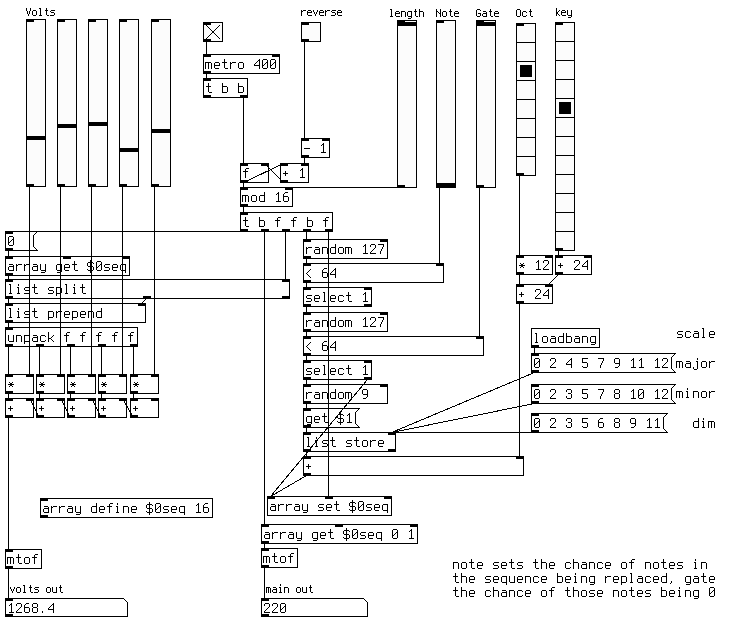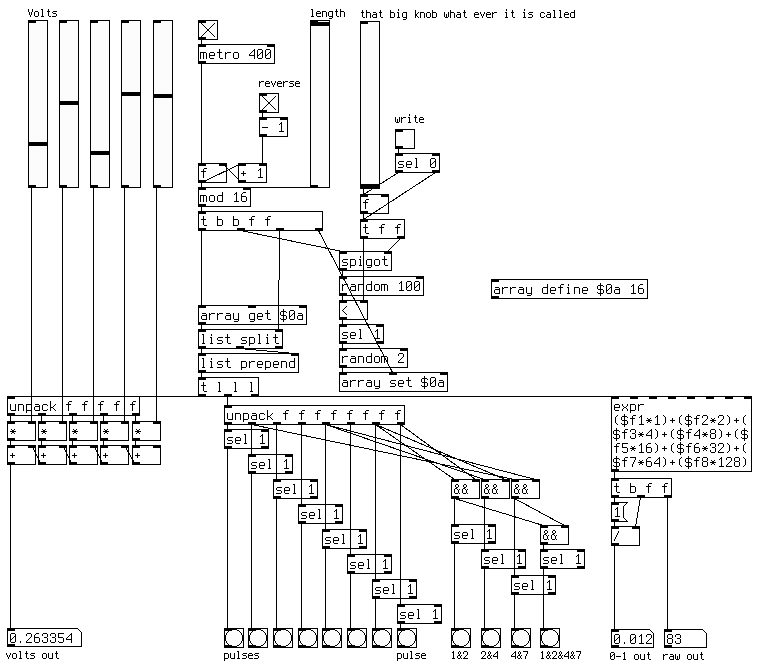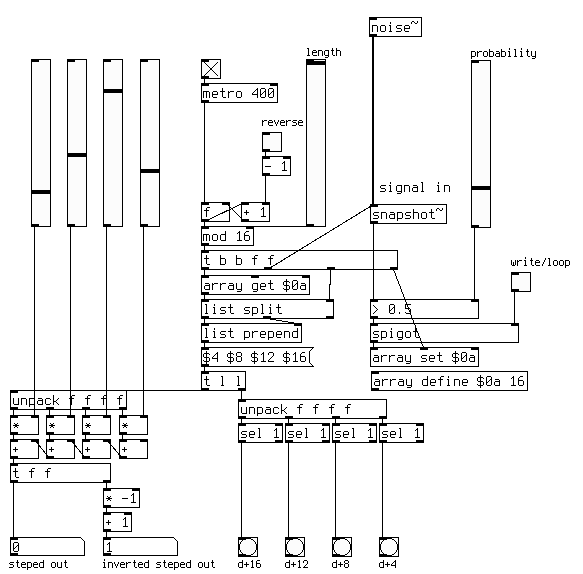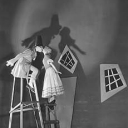I've recently been thinking about using a Turing machine type module in Pure Data to add sequencers. Some of the Eurorack designs look pretty cool but, I'm not finding a lot of info on versions of these in pd. Any good examples or tips to design one?
-
Turing Machine Sequencer
-
https://en.wikipedia.org/wiki/Linear-feedback_shift_register
While I don't know if this is implemented in Pd, but the Turing machines I've seen are based on the linear feedback shift register.
-
Hello,
I developped a while ago what I understood of the Eurorack Turing machine. Here is the patch.
Hope this helps in your research. Improvements are welcome of course. Turing_JMC.pd -
@high_output-5000 Here is a random sequencer loosely based on the turning machine, pd makes some aspects of the turing machine easier. Has room for improvements but it should provide a start.
rseq.pd

Edit: revision 830, everything supposedly fixed... -
And here is a more accurate version, has most everything that the real deal does except that 32 step mode which I am not sure what is. Raw output really needs to be scaled, ranged and quantized but pd crashed and I am not going to do that part over again right now.
tm.pd

-
An ancient and long forgotten neuron has fired. The Turning Machine Sequencer is pretty much a slight tweak on the original version of the Klee Sequencer. Turing Machine replaced the 4 bit analog DAC operating on every 4th bit with a proper 8 bit DAC which operates on the first 8 bits and then added the Volts and Pulses expansion to bring out its inner Klee. The Klee has one trick which the Turing Machine lacks, Klee does not have a internal noise source, just an input so the Klee also can function as a tracking generator, which could be added to the above versions easily enough.
klee.pd

-
And to round things out, the model 2 Klee, well half of one. Skipped a few details like that gate outs and ranging but added a few like the ability to load the current pattern onto the toggles which is quite handy.
klee2.pd

-
Excellent, thank you.
The only thing I modified is the range of the probability slider. Noise values come from -1 to 1, so even if the slider is all the way down, we still get random modifications to the sequence. Another way could be using an abs object...
Great patch.
PS. Another change could be summing all the event sliders to correctly map the voltage outcome...
-
@patricio.tics I just followed the schematics without question and meant them more as outlines for others to develop into abstractions with tweaks for their needs. The event sliders are summed, mapping I think is best left external since you never know the exact needs of the destination and since they are summed it can push the output out of the desired range so I think setting the range and how to limit it is best left external. I am not sure why you would want the probability slider to not write, that is what the loop/write toggle does and using the toggle for that works better for external/automated control but quite easy to do. I have been playing with klee2 quite a bit the past few weeks and refining it into a proper abstraction, quite a fun little sequencer, I will upload it in the next few days, just have a few bits of the interface to finish off.


